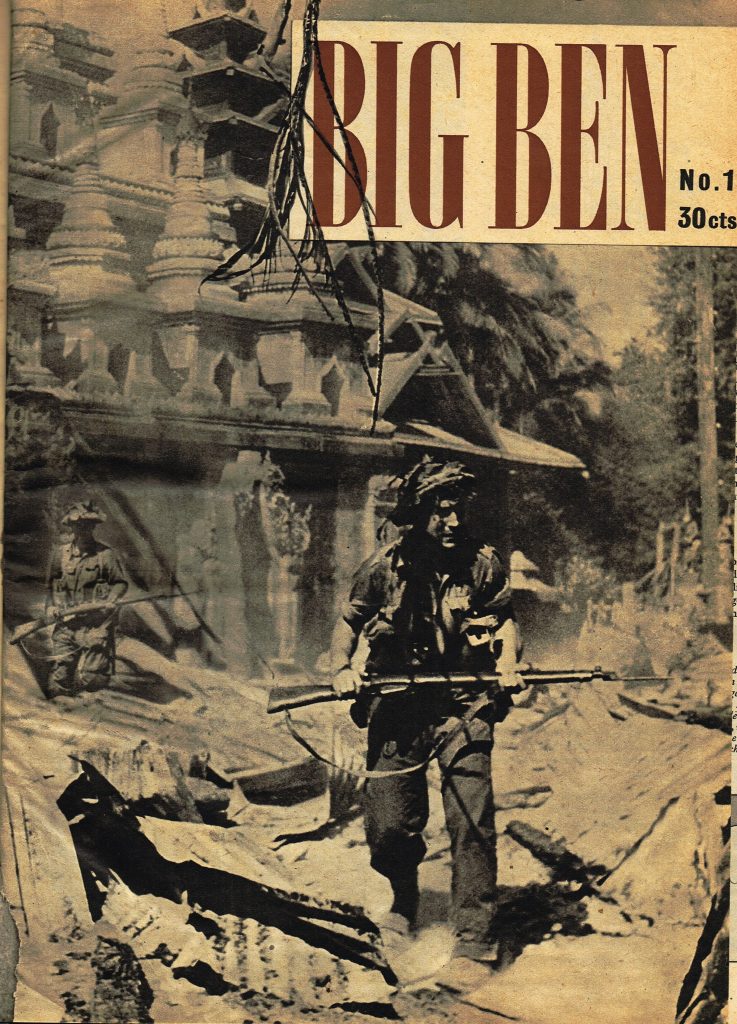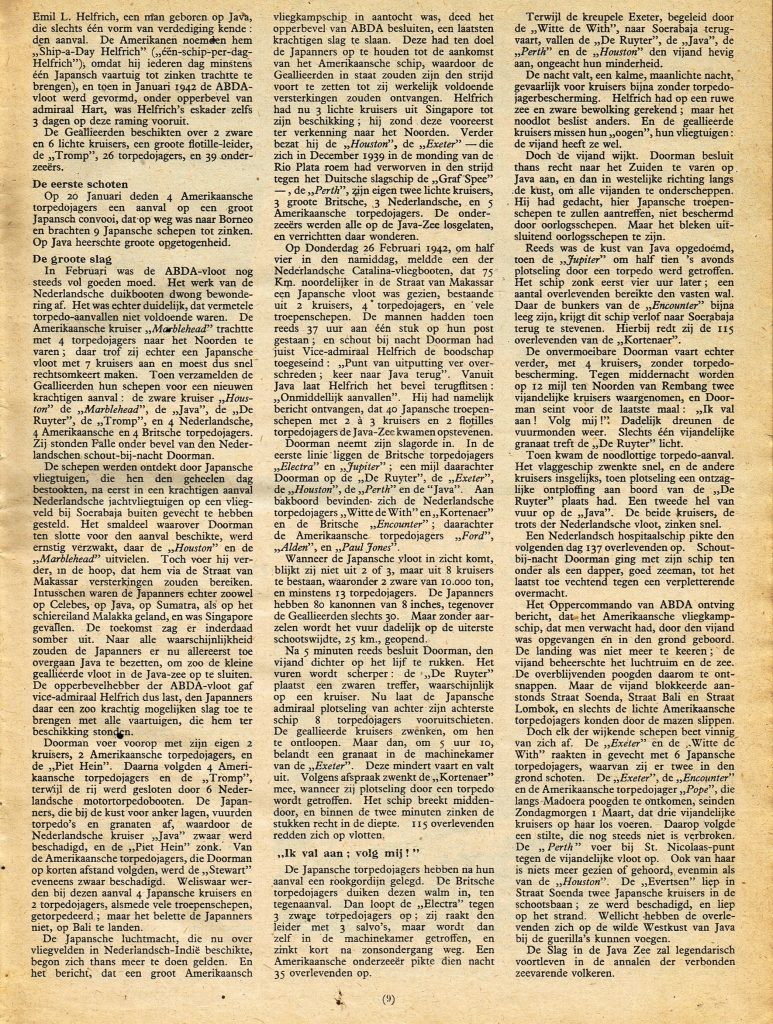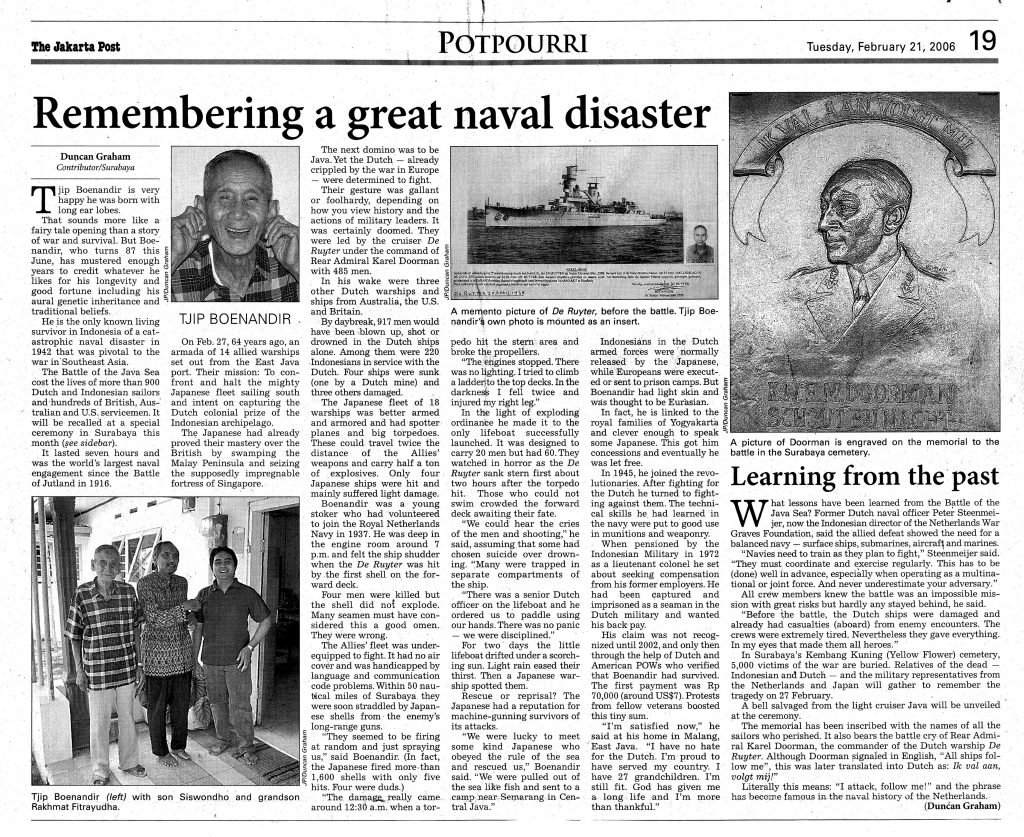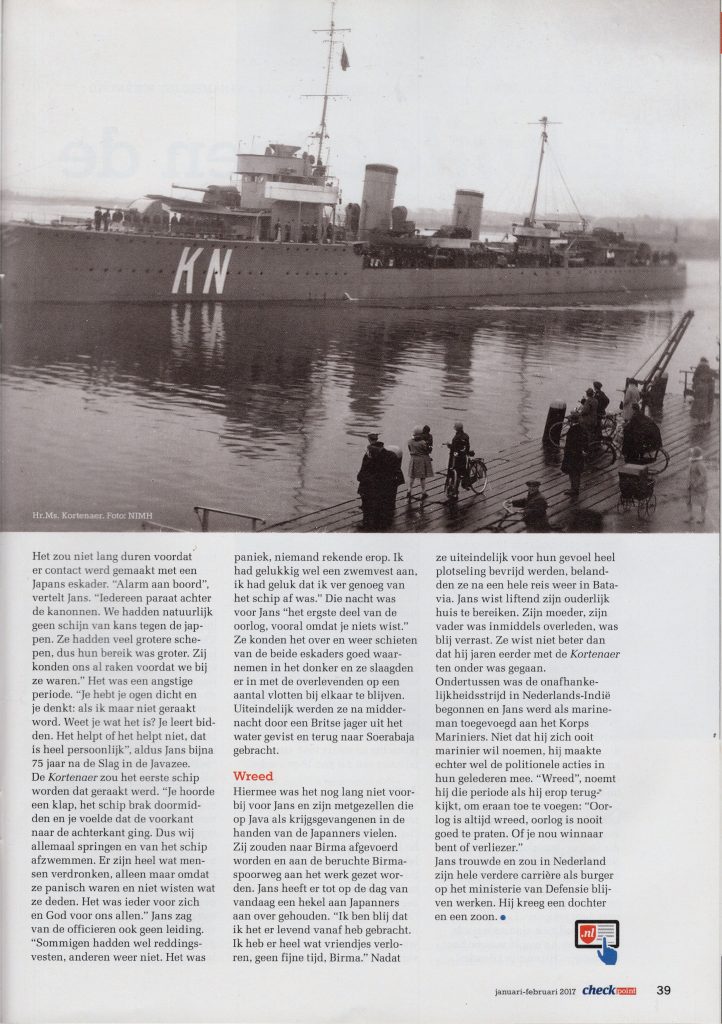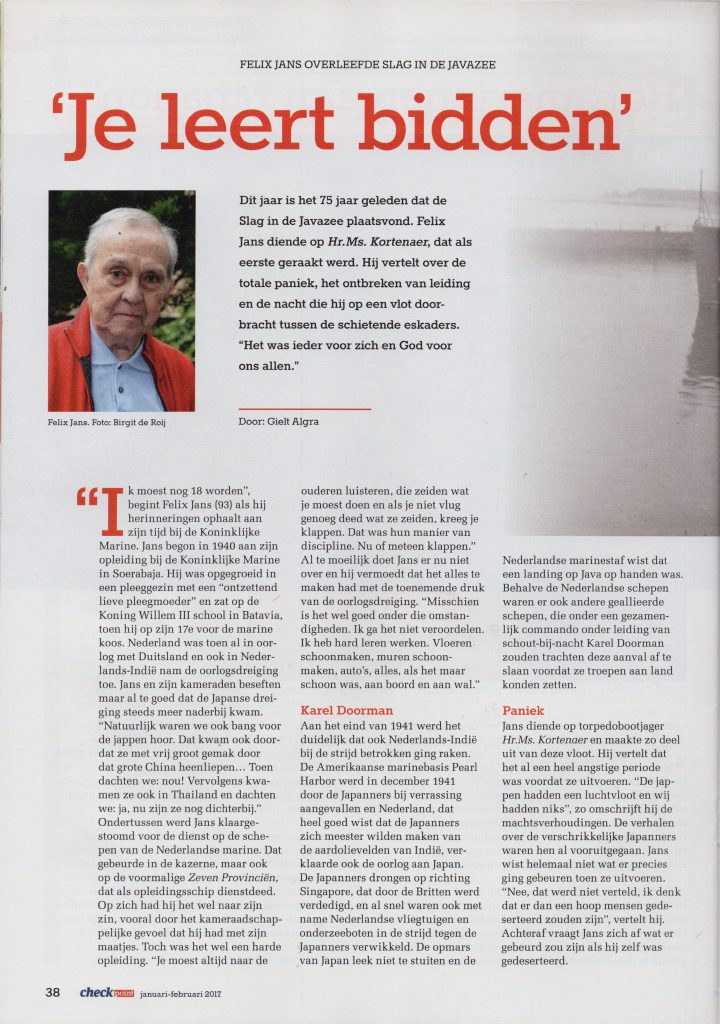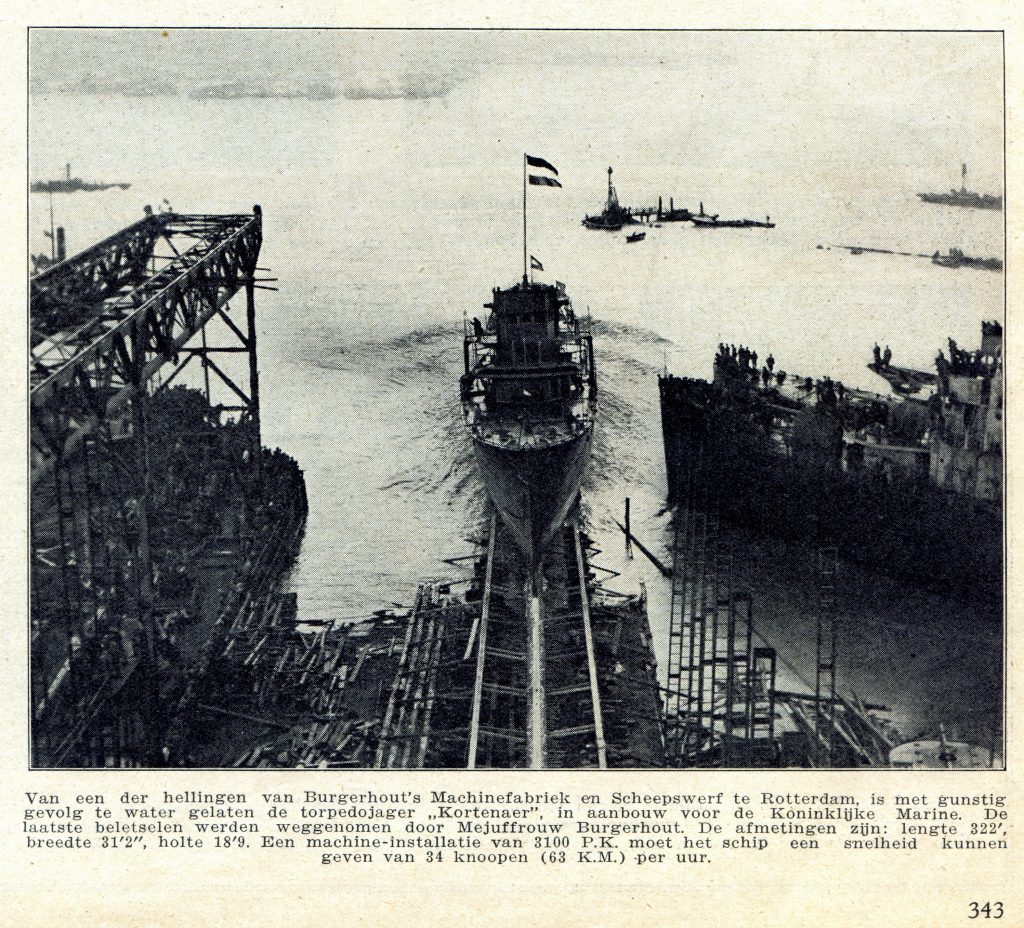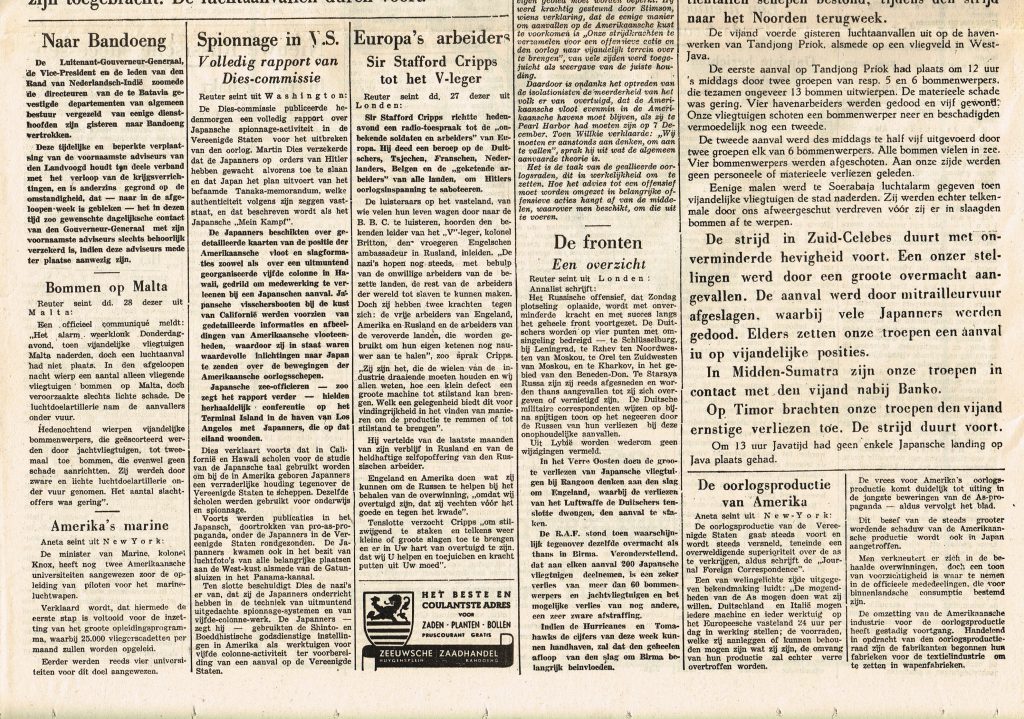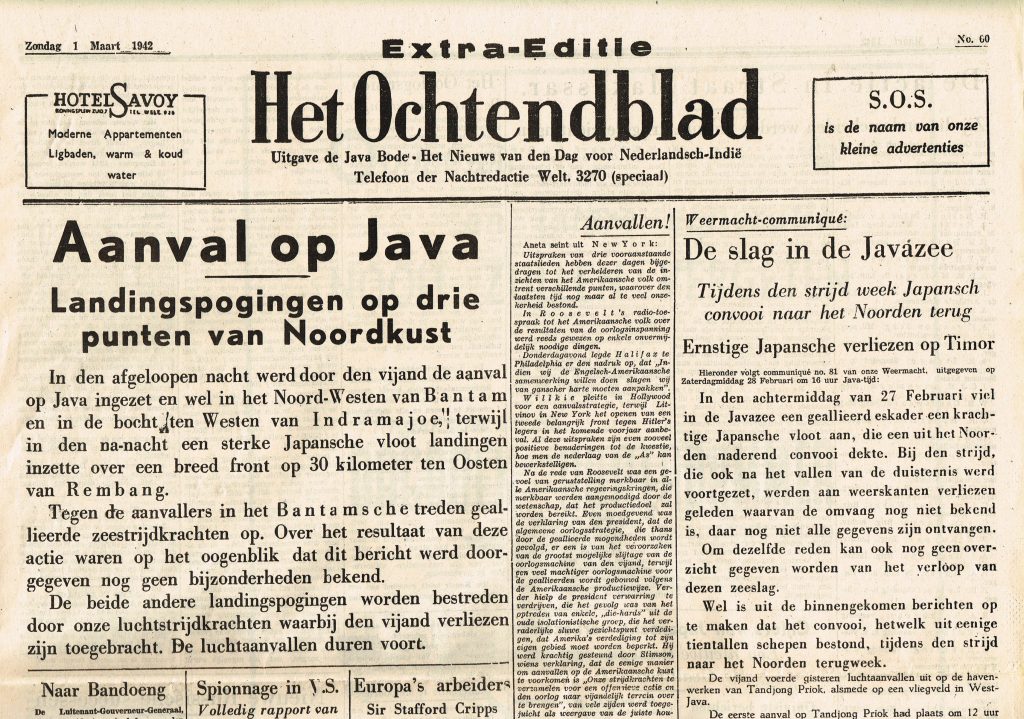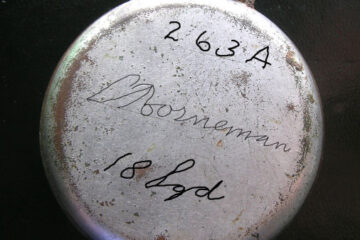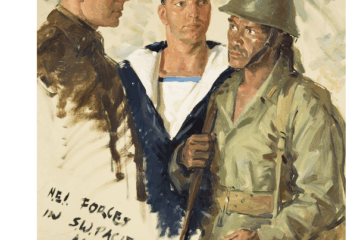Battle of the Java Sea
The American-British-Dutch-Australian (ABDA) Command, or ABDACOM, was established in Bandung, Java, on 15 January 1942 and became operational shortly afterward. However, by this time, Japan had already been at war with the Allies since 7 December 1941, and its forces were rapidly advancing through Southeast Asia. The command had little time to prepare for military operations and suffered from significant communication problems, as the forces could not properly coordinate due to incompatible radio equipment and language barriers. ABDA was hastily assembled and lacked a clear strategic plan, forcing each Allied force to make decisions independently rather than as a unified command.
By February 1942, the Japanese invasion fleet was on its way to the Netherlands East Indies. The Dutch had already been fighting for over two months, suffering heavy losses in battles across Borneo, Sumatra, and Celebes. These early defeats weakened their ability to defend Java, leaving them with the insurmountable task of protecting their own lands against a far superior Japanese force.
At the same time, Australia was also under direct threat. On 19 February 1942, the Japanese launched the bombing of Darwin, marking the first major attack on Australian soil. There were growing fears that Japan might use its invasion of the Dutch East Indies as a stepping stone for an invasion of Australia.
The Battle of the Java Sea took place on 27 February 1942. The ABDA naval forces, under the command of Dutch Rear-Admiral Karel Doorman, attempted to intercept the Japanese invasion convoy. However, the Imperial Japanese Navy decisively defeated the ABDA Strike Force, sinking multiple Allied ships. The Dutch cruiser Hr.Ms. De Ruyter, serving as Doorman’s flagship, was torpedoed, and Doorman was killed in action.
The battle continued over the next two days in smaller engagements, but the Japanese advance was unstoppable. The defeat in the Java Sea effectively ended ABDA Command’s role in the defense of the Dutch East Indies, and Java fell to Japanese forces on 9 March 1942.
The Battle of the Java Sea was one of the largest naval battles of World War II in the Pacific and marked a decisive victory for Japan, leading to the collapse of Allied resistance in the region.
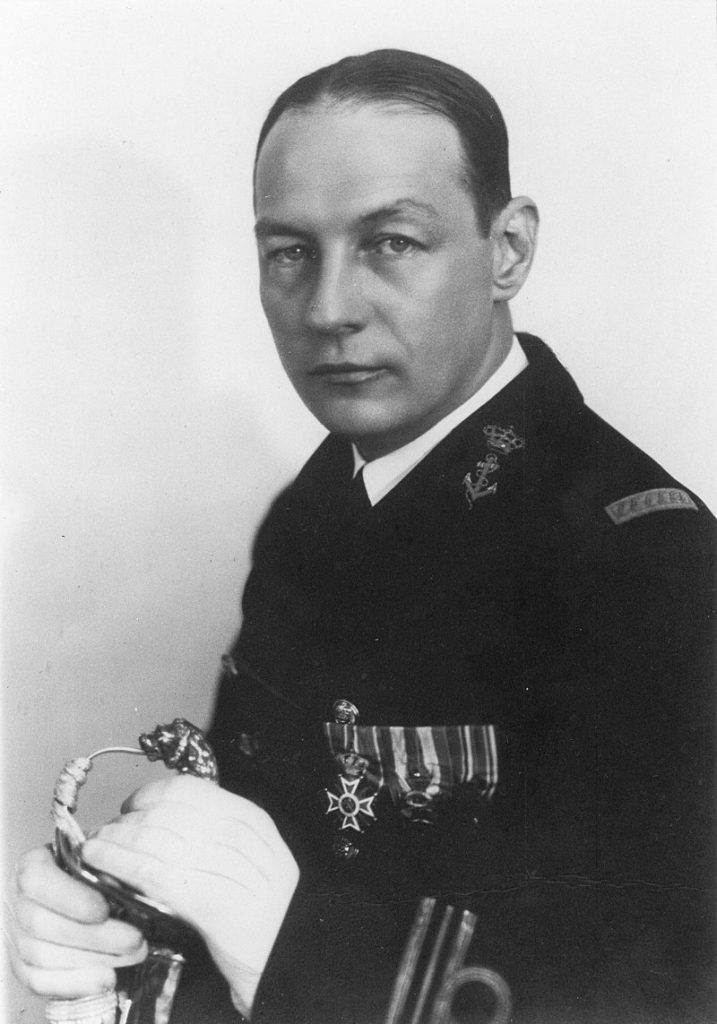
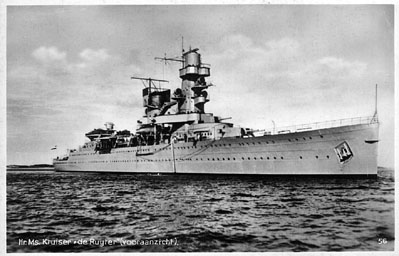
The Dutch surface fleet was practically eradicated from the Asian waters. However, this battle did slow down the Japanese expansion. If air support had been given by the other Allied Forces this battle could have turned out differently, without that support the ships were sitting ducks as the Japanese air force pinpointed their positions. On the Allied side, two light cruisers and three destroyers were sunk, one heavy cruiser was damaged, and 2,300 sailors killed. On the Japanese side, one destroyer and one transport ship were damaged, and 36 sailors killed.
The aftermath of the battle saw several smaller actions around Java, including the smaller but also significant Battle of Sunda Strait.
While the ABDA losses were heavy it is also important to note that the Battle of the Java Sea and the defence of the Netherlands East Indies took longer than the week-long battle that saw the Fall of British Singapore. The Battle of the Java Sea and consequent guerrilla warfare on land of Australian and Dutch troops on the outer islands did delay the Japanese advance.
The disaster in the Java Sea led to the abandonment of ABDA which in its turn led to chaotic situations with many troops stranded in Borneo, Sumatra and Celebes. Without Allied support many troops were left on their own some were able to escape, some were massacred by the Japanese, others became POW of which many died in the dreaded force labour camps. On the positive side many units were able to destroy oilfields, airfields and ports which again hampered the Japanese in the war effort going further.
Two weeks after the Battle in the Java Sea the Netherlands East Indies (NEI) Government capitulated. Unknown to most, fighting on the outer lands especially Timor and Dutch New Guinea through guerrilla warfare by combined Australian and Dutch units continues to well into 1943.
The Koninklijke Nederlands Indische Leger (KNIL) as well as the NEI Navy and Airforce fought much longer in the war against the Japanese than the Dutch military in Europe. The casualties of the KNIL (mainly Indonesian people) were in magnitudes larger than the casualties incurred by the Dutch military in the Netherlands.
Paul Budde



